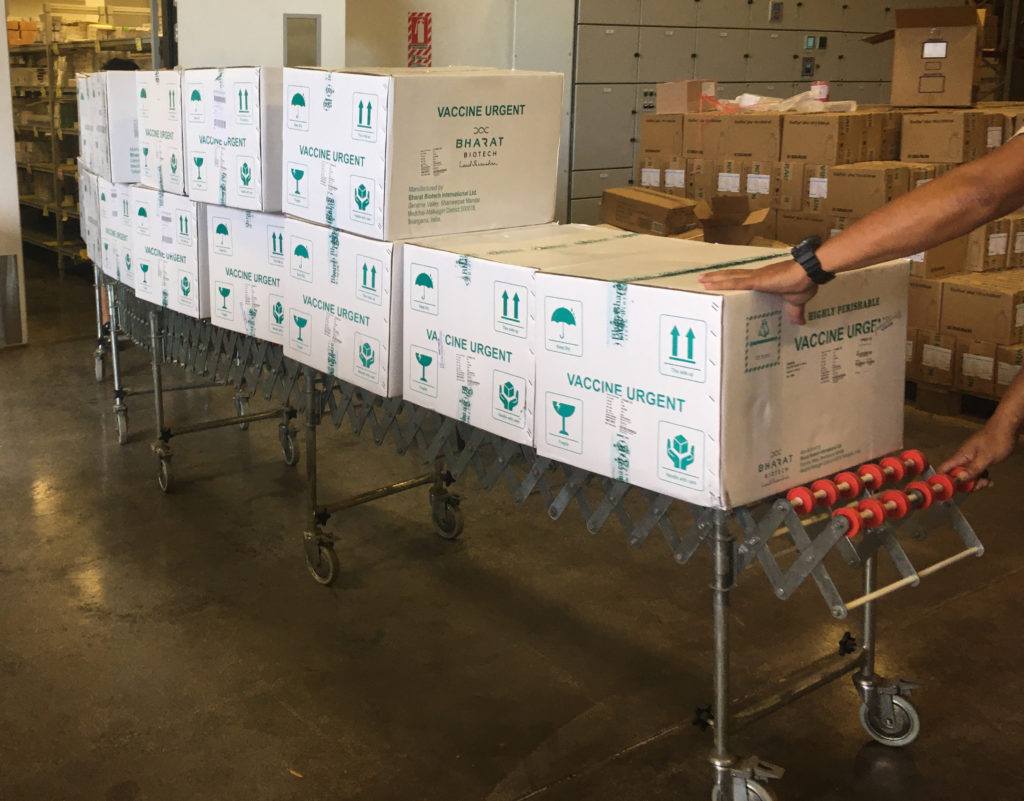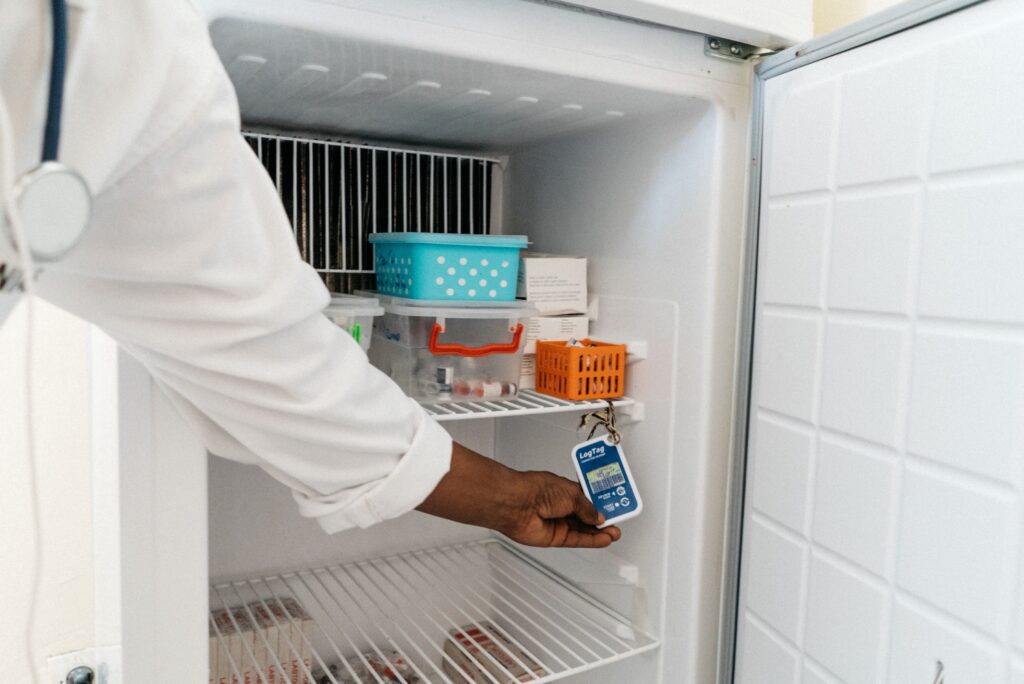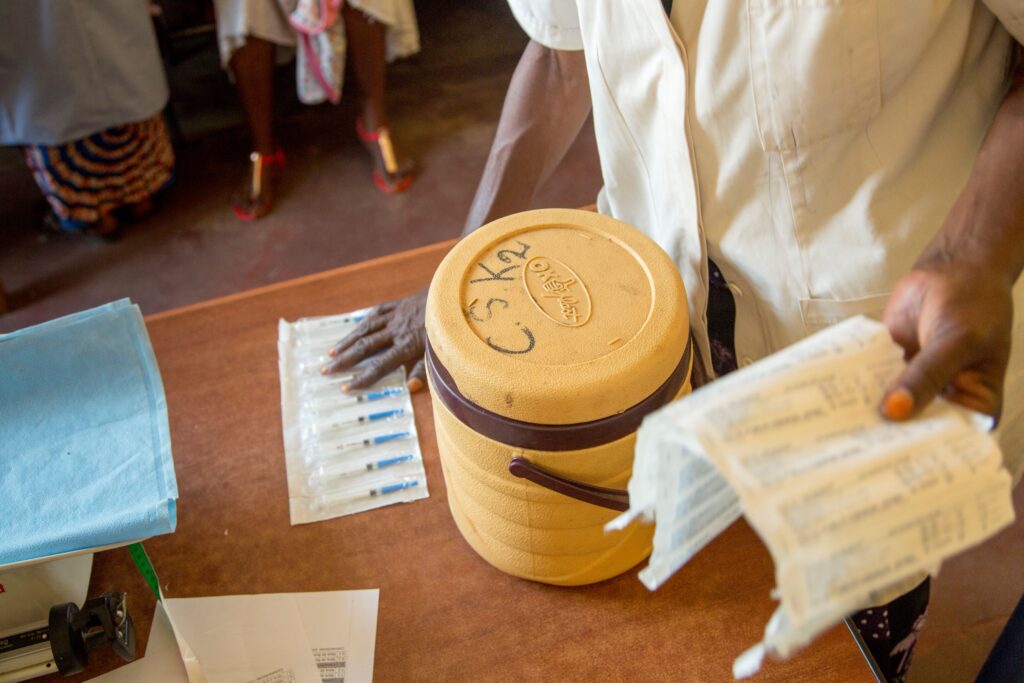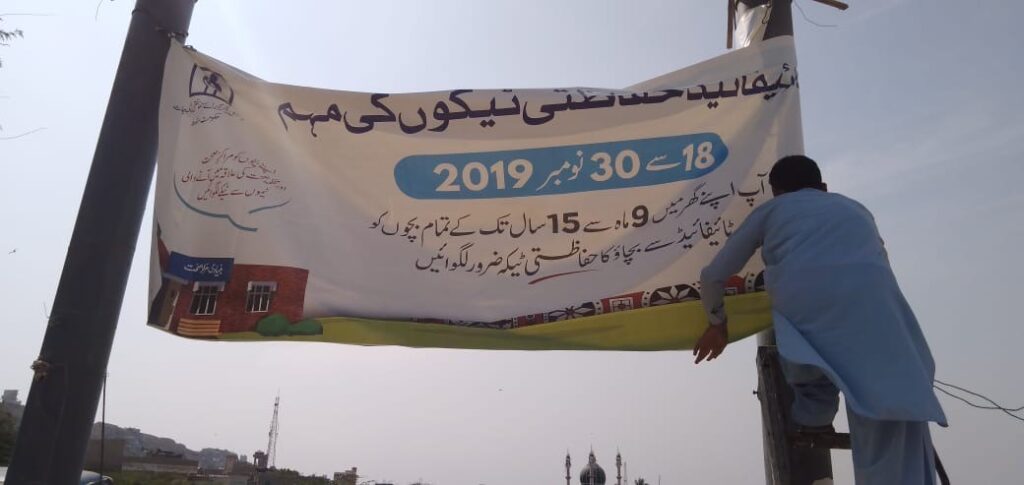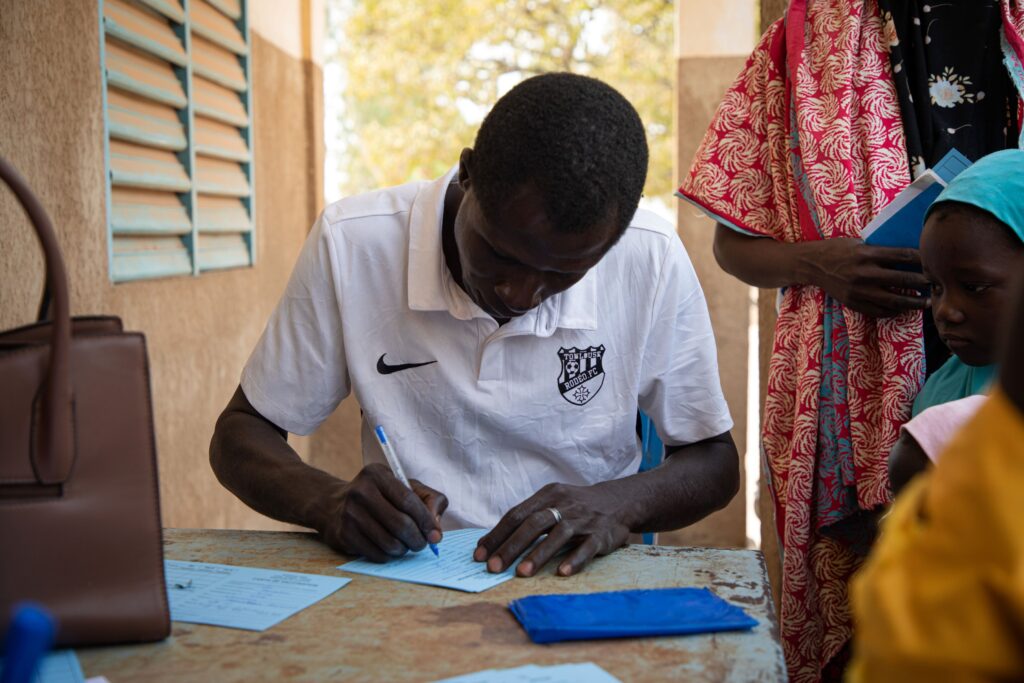Pour lire ce blog en français, veuillez cliquer ici
World Immunization Week, celebrated the last week of April, is a chance to recognize both the lifesaving power of vaccines and the teams of people who work tirelessly to deliver them. Behind every immunization campaign, there are hundreds of people, including vaccinators, procurement officers, customs officials, cold chain managers, and logistics officers, who make it possible to bring vaccines from manufacturing facilities to the communities that need them.
The introduction of WHO-prequalified vaccines in the past few decades has transformed global health, saving lives of all ages. Among these, typhoid conjugate vaccines (TCVs) have emerged as a crucial tool to prevent typhoid, particularly in high-burden countries and countries with high rates of drug-resistant typhoid.
With support from Gavi, the Vaccine Alliance, TCVs are being integrated into routine immunization programs, enhancing access and availability for vulnerable populations. In this photo essay, we celebrate all those who have helped reach more than 75 million children with TCVs in campaigns and millions of others with critical vaccines through immunization programs.
Managing a complex supply chain
Like any other manufactured good or commodity, vaccines depend on a supply chain: the system that ensures the right resources are available at the right time and place. Procurement officers and financial officials work with manufacturers to obtain quality-assured vaccines. Once the vaccines are procured, supply chain managers, logistics specialists, and other staff arrange for their distribution and transportation.
Photo: Delivering TCV to a warehouse in Samoa ahead of introduction. Credit: TyVAC/Jane Han
Once manufacturers produce vaccines, shipping and logistics workers send them out as refrigerated cargo to the countries that will use them. In the recipient country, warehouse workers receive the vaccines and store them as refrigerated cargo in central warehouses. Everyone who handles vaccines, from the manufacturer to the health clinic to the vaccinator, has an essential role in preserving the cold chain: the temperature-controlled supply chain that ensures vaccines remain effective and safe by maintaining them at specific temperatures.
Photo: A health worker at the Thiénaba health post in Senegal shows a sensor in a refrigerator that monitors the temperature. Credit: PATH/Gabe Bienczycki
Cold chain technicians and assistants are specialists in this area. They inspect cold chain equipment and monitor temperature data, ensuring that vaccines maintain their potency throughout the storage and transportation process.
Photo: A health care worker unpacks a container full of vaccine vials at Kenya General Hospital in Lubumbashi, Democratic Republic of the Congo. Credit: PATH/Georgina Goodwin
Carrying precious cargo
The insulated containers that hold vaccines look a lot like drink coolers—but getting them to their final destination is no picnic. It takes hundreds of drivers and health workers to distribute the vaccines from regional hubs to health centers, schools, and other vaccination sites where they will be administered. Whether by truck, boat, motorcycle, bicycle, pack animal, or on foot, health workers and drivers carry the vaccines in cold boxes to reach cities, towns, and remote villages across the country.
Photo: Carrying typhoid conjugate vaccines in insulated containers during an immunization campaign in Malawi. Credit: TyVAC/Madalitso Mvula
Bringing vaccines to communities
Nurses, vaccinators, and other health workers hold the key job of delivering vaccines to communities. But the work extends beyond just administering shots, as immunization workers must meet community members where they are to get the word out and generate demand for a vaccine. Organizing educational and awareness campaigns, training vaccinators to respond to misinformed caregivers, and even going door to door to identify all eligible children are just some of the activities that immunization campaign workers carry out before a vaccination campaign begins.
Photo: Hanging up a banner advertising a typhoid conjugate vaccine campaign in Pakistan in 2019. Credit: TyVAC/PHC Global
Health care workers and campaign organizers also have the critical task of tracking vaccine uptake and monitoring inventory. By keeping a close eye on the data, workers can move extra vaccine doses where they’re needed to prevent spoilage and stockouts. Collecting accurate data on vaccination is also essential to measure a vaccine’s effectiveness and inform decision-making about disease prevention and control strategies down the line.
Photo: A health care worker fills out vaccination cards during Burkina Faso’s TCV introduction in 2025. Credit: TyVAC/Build Africa Communications
Investing in people and systems
Between 2000 and 2020, vaccines have reached more than 1 billion children and saved more than 17 million lives. This incredible achievement is grounded in the work of thousands of people and partners who make vaccine delivery possible.
But investment in vaccine supply chains, and the trained staff to run them, have not kept pace with the growth in vaccine development, manufacturing, and delivery. Research has found that vaccine supply and logistics systems are struggling to keep up with growing immunization programs, with a need for more training, supervision, and capacity-building in the vaccine delivery workforce. In many countries, frontline health workers manage multiple responsibilities, including routine immunization, primary healthcare, and family planning, while also managing vaccination campaigns.
Despite the positive health benefits of introducing new vaccines like TCVs, their introduction increases the workload and strains workers’ capacity to maintain additional healthcare services. Furthermore, many countries face significant shortfalls of vaccinators, supervisors, campaign volunteers, cold-chain managers, medical technologists, statisticians, and other essential personnel, making vaccine availability and access in remote and underserved areas increasingly difficult.
Making immunization humanly possible
Supporting healthcare workers through training, fair compensation, and workforce expansion is essential. We must continue to invest in the health workers, supply chain managers, cold chain technicians, and dozens of other roles that make immunization possible. As we observe World Immunization Week, we celebrate their work and advocate for ongoing momentum against typhoid and other diseases.
Cover photo: A health care worker delivers TCV during a campaign in Nepal. Credit: PATH/Rocky Prajapati


